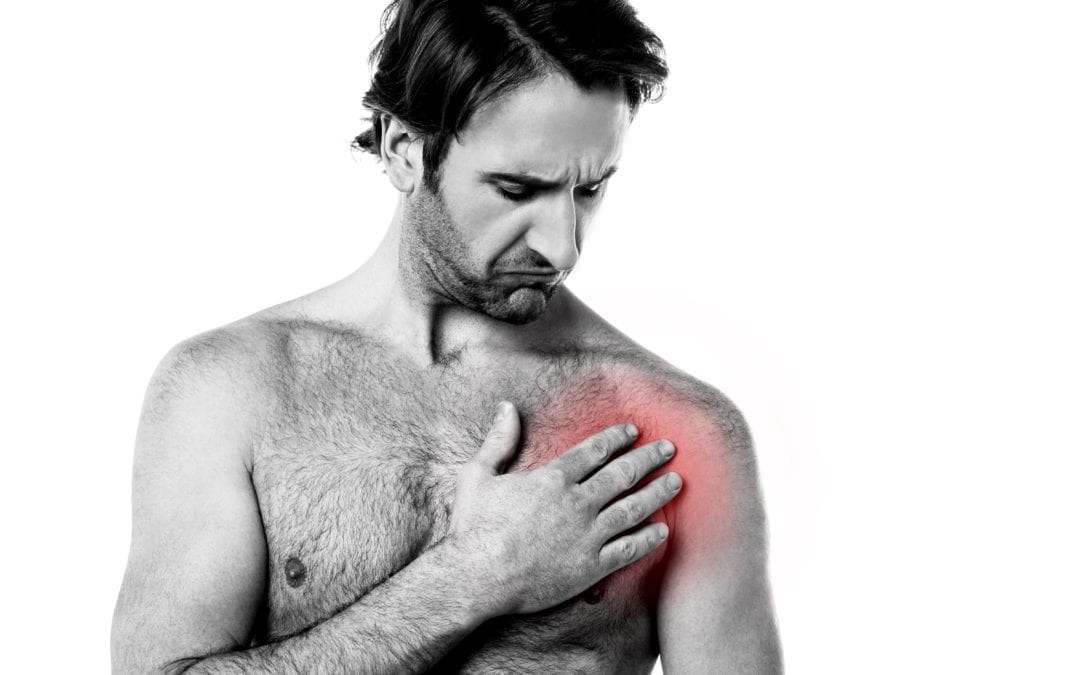Fessa, K. C., Linklater, J., Peduto, A., & Tirman, P. (2015). Journal of Medical Imaging and Radiation Oncology, 59, 182-187.
Summary by: Nate Turner SPT, Missouri State University, Springfield, Missouri
Posterosuperior glenoid internal impingement (PGII) is a type of impingement syndrome that often affects throwing or overhead athletes in sports such as baseball, softball, water polo, tennis, and javelin. PGII occurs when there is contact of the greater tuberosity of the humerus and the posterosuperior labrum, compressing the rotator cuff between the two surfaces. This contact can occur during the late cocking phase of throwing where the shoulder can be maximally externally rotated to 170-180 degrees and abducted to 90-100 degrees. Structural and biomechanical differences can occur, often exacerbating PGII which can clinically present in three stages and with observable features on MR imaging.
The aim of this study was to discuss the presentation of multiple athletes with PGII to explain clinical features, results of MR imaging, and discuss considerations for future MR imaging of this condition. The authors of the study also discussed theories regarding the pathophysiology of PGII. The first theory, postulated by Jobe, suggested that repeated and excessive strain to the anterior capsuloligamentous structures during the late cocking phase of throwing eventually lead to the failure of these structures. According to Jobe, the injured anterior capsule structures are unable to properly restrain the humeral head during throwing, which would lead to posterior displacement of the humerus and increase the contact of between the greater tuberosity and the posterosuperior labrum, compressing the rotator cuff between the two structures when in the abducted-external rotation (ABER) position. Further studies to determine the validity of this theory have not demonstrated the anterior instability expected in patients with PGII. The second theory discussed in the study proposed that repetitive microtrauma from the distraction and rotational forces placed on the shoulder during the follow through phase of throwing result in contraction and fibrosis of the posteroinferior shoulder capsule. This theory is supported by clinical findings that patients with PGII have a glenohumeral internal rotational deficit (GIRD). It is also supported by MR imaging which can demonstrate thickening of the posterior capsule in patients PGII.
Physical findings on MRI that are associated with PGII can include inferior surface rotator cuff irregularities, labral abnormalities, and cystic changes at the posterosuperior humeral head. The rotator cuff tears associated with PGII are typically small and located around the junction of the supraspinatus and infraspinatus tendons. These tears can be seen with conventional non-contrast MRI’s, but MR arthrography (MRA) significantly increases sensitivity for detecting partial thickness supraspinatus tears and SLAP lesions over conventional MRI. Additionally, performing an MRA in the ABER position, as opposed to the standard position for shoulder imaging, allows the posterosuperior rotator cuff to relax, permitting more contact, if used, to fill into the tear. The ABER position allows for easier identification of rotator cuff tears, humeral head cysts, and posterosuperior labral tears because it approximates the locations of potential pathology. Imaging in the ABER position allows for greater specificity because the changes to the humeral head and labrum are more difficult to appreciate with conventional axial imaging studies.
This study demonstrates that PGII occurs in overhead throwing athletes and can result in several pathological changes to the shoulder and related structures. These changes can be viewed with conventional axial imaging, but MRA in the ABER position can lead to more specific identification of these pathological changes.
Personal Commentary:
This article was of interest to me because of my pervious experiences studying the examination and rehabilitation in overhead throwing athletes. It was also of particular interest to me because the patient population of overhead throwing athletes is one that I would ideally work closely with in the coming years. Differentiating between the multiple pathologies that can occur in the shoulder has been an area of my clinical examination skills where I would like to improve, and reviewing this and other articles provided to us has helped me to start that process. According to an article by Matthijs and Phelps, “during the clinical examination, signs of external impingement should be negative; in other words, there should be no painful arc during elevation and impingement tests should be negative” (1998, p. 2). The article also mentions that “internal impingement involves pathologic contact between the articular (or deep) side of the rotator cuff tendon (generally either the posterior part of the supraspinatus tendon or the anterior part of the infraspinatus tendon) and the posterior-superior glenoid rim” (Matthijs, Phelps 1998, p.2). The article by Fessa, Linklater, Peduto, and Tirman echoes this idea of internal impingement by saying that “the supraspinatus can be normally compressed or impinged between the greater tuberosity and the posterosuperior labrum in the abduction and external rotation position” (2015, p. 182). It is important to be knowledgeable of the different pathologies that can occur in the shoulder complex. Having greater knowledge of these pathologies can lead to earlier diagnosis and treatment because the subjective history, objective clinical exam, and special testing will be done with greater specificity in order to differentiate between the potential pathologies.
References:
Fessa, K. C., Linklater, J., Peduto, A., & Tirman, P. (2015). Posterosuperior glenoid internal impingement of the shoulder in the overhead athlete: Pathogenesis, clinical features and MR imaging findings. Journal of Medical Imaging and Radiation Oncology, 59, 182-187.
Matthijs, O., & Phelps, V. (1998). Differential diagnosis of posterior shoulder pain. The AAOM/IAOM-US Quarterly, 23, 1-5.

